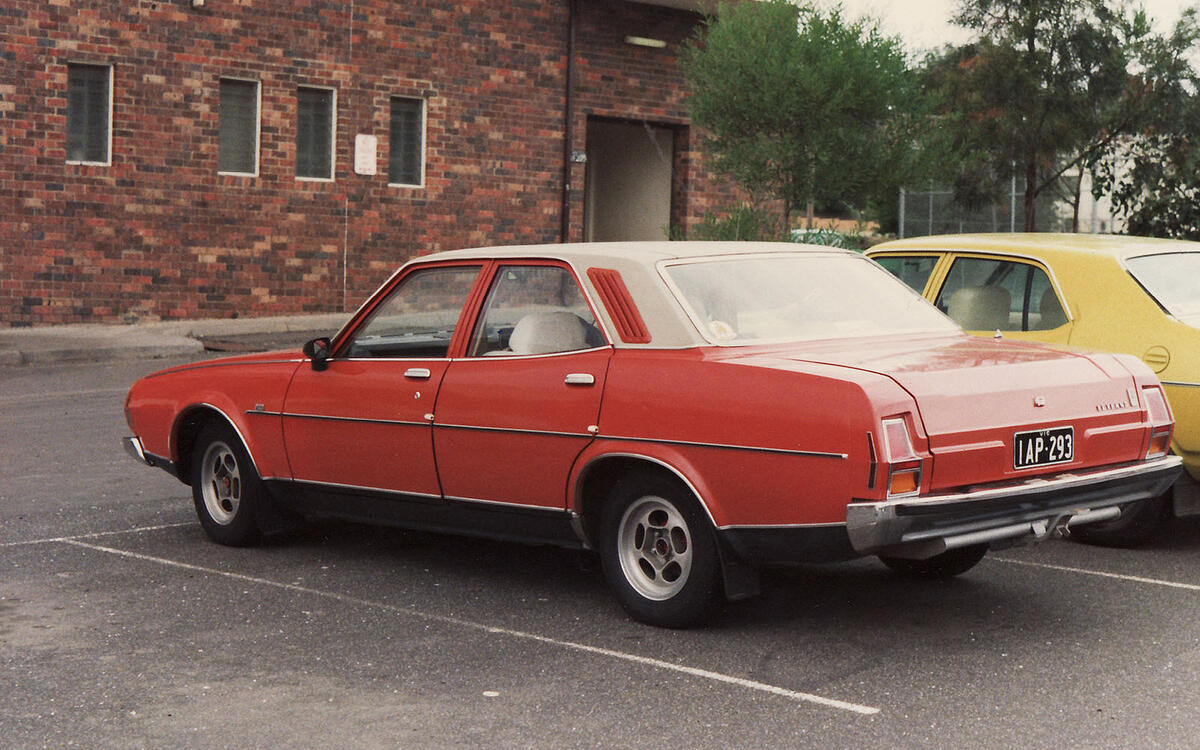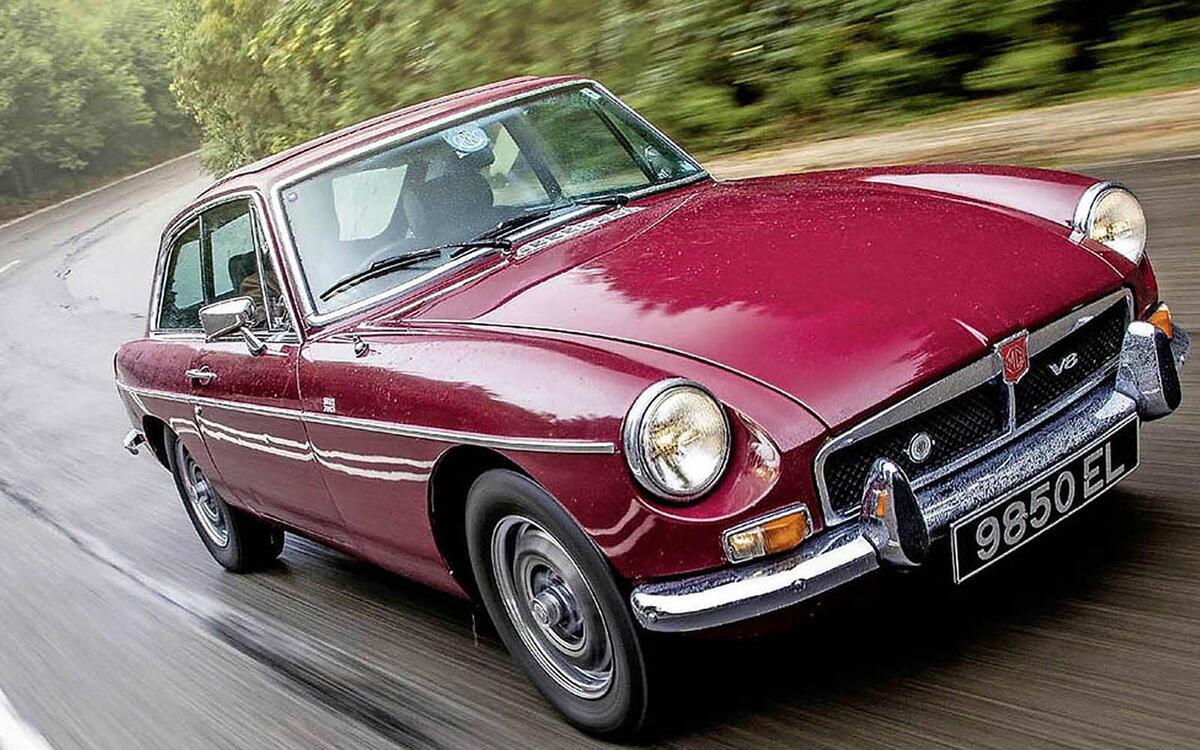 Slide of
Slide of
British Leyland: a reliable source of jokes for ‘Fawlty Towers’, Private Eye and anyone searching for a symbol of a failing Britain in the 1970s.
Formed on 13 May 1968, British Leyland was, for a time, the second biggest car company outside the US (after VW).
It was created out of the merger between the Leyland Motor Corporation and British Motor Holdings, which were the two largest wholly British car manufacturing groups in the UK at the time.
The resultant industrial sprawl saw Austin, Morris, MG, Triumph, Rover, Jaguar, Land Rover, Riley, Wolseley, Vanden Plas and Daimler thrown together, along with an extensive assortment of truck, bus and engineering businesses.
The indigestability of this merger, together with massive underfunding and nightmarish industrial unrest saw the business shrinking faster than a lake in an Australian drought.
But that didn’t stop some interesting machines from emerging, several of them legends, before the increasingly stained British Leyland (BL) name was eliminated, in 1986. Join us as we take a look at its best...
 Slide of
Slide of
Austin 1300 GT (1969)
‘The One GT That Just Had To Be’. So read the ads for the vinyl-roofed, fake alloy-wheeled, twin carburettor Austin 1300, which appeared seven years after the original hugely popular big Mini that was the Morris 1100, for many years the UK's top-selling car.
 Slide of
Slide of
Austin 1300 GT (1969)
This was more than the lifespan of the average car today, but five years before the 1100/1300 went out of production. Quite a hit despite the tackiness of its modish matt black add-ons, and much-prized today. Its 70bhp might not sound much today, but back then it qualified this car as a hot hatchback.
 Slide of
Slide of
Innocenti Mini Cooper 1300 (1972)
BL canned the Mini Cooper in 1971, but its Italian partners Innocenti continued to build Coopers until 1975, launching the 71hp Cooper 1300 in 1972.
 Slide of
Slide of
Innocenti Mini Cooper 1300 (1972)
Much better finished than the UK variety, it featured six-dial instruments, cloth trim, Rostyle wheels, opening quarterlights and many other detail improvements, selling well in Italy, Germany and France.
 Slide of
Slide of
Innocenti Bertone Mini (1974)
Such was the success of Innocenti that it did what BL had failed to do, and developed its own Mini replacement. Designed by Bertone, it used Mini mechanicals and was almost identically scaled because BL couldn’t afford the £1 million investment required to extend the wheelbase.
That limited sales of a stylish, well-built supermini that with that extra investment, could have filled in for the Metro that came six years later.
 Slide of
Slide of
Jaguar XJ12 (1971)
The 1968 Jaguar XJ6 was impressive enough with its sporting chassis, sumptuous comfort and subtle elegance, but the much-anticipated XJ12 was a clear contender for the best-car-in-the-world title.
Amazing refinement, subtle potency and the sophistication of 12 cylinders was yours for well under half the price of an Italian V12. The waiting list was enormous.
 Slide of
Slide of
Jaguar XJ-S (1975)
There was no escaping the disappointment of the XJ-S, this sleek, oddly styled high-speed cruiser an indirect replacement for the legendary E-type sports car.
 Slide of
Slide of
Jaguar XJ-S (1975)
Equally unescapable, however, was the fact that the XJ-S did the svelte long-distance coupe thing better than any German or Italian rival, for a fraction of the price. Thus saving you enough to fuel its voracious appetites.
 Slide of
Slide of
Leyland P76 (1973)
By the early 1970s, Australians had developed a taste for big, American-style V8 saloons tough enough for outback survival. Leyland Australia took on GM's Holden, Ford and Chrysler with the P76, a vast saloon capable of swallowing a 44-gallon oil-drum and out-handling all its rivals.
 Slide of
Slide of
Leyland P76 (1973)
But poor quality and the arrival of a BL axe-man saw Aussie Wheels magazine’s car of the year winner killed just 18 months after launch, together with the Sydney factory that built it.
 Slide of
Slide of
MGB GT V8 (1973)
It took tuner Ken Costello to demonstrate the feasibility, and appeal, of squeezing the Rover 3.5 V8 beneath the MGB’s bonnet, a conversion that sliced over 3sec of the standard car’s 12.1sec 0-60mph time and boosted its top speed to 130mph.
 Slide of
Slide of
MGB GT V8 (1973)
It took BL four years to effect the same conversion; the MGB GT V8 launched in 1973, just in time for the sales-deadening fuel crisis. Only 2691 were made, but it’s the best MGB.
 Slide of
Slide of
Land Rover Range Rover (1970)
An early example of the cross-over, combining go-anywhere mountain goatery with modishly dignified elegance, executive car comfort and 100mph performance. One of a handful of cars that kick-started the SUV craze, and one of several genuine world-beaters from British Leyland.
 Slide of
Slide of
Land Rover Range Rover (1970)
It took the company years to realize what it had done and exploit it, though, and even that was mostly done by the subsequent owners of Land Rover. Still, uniquely in this feature it is a nameplate that survives to this day.
 Slide of
Slide of
Rover SD1 (1976)
This was the car that might have turned BL around. The Ferrari Daytona inspired it, almost to the point of copying, its lightweight V8 combined with simple, well-engineered mechanicals to terrific effect. This dramatically fresh executive machine outpointed the opposition on every metric bar one: quality.
 Slide of
Slide of
Rover SD1 (1976)
Dire materials and assembly standards undermined a great design, regular strikes and awful quality control turning a world-beater into a sad also-ran.
 Slide of
Slide of
Triumph 2.5 PI (1969)
Triumph and Rover pioneered the executive car with their 2000 saloons, Triumph cementing its UK success with a clever Michelotti facelift and the apparent advance of Lucas fuel injection for its tuneful straight six.
This was just the recipe BMW was pursuing, except that the Munich machines did not need the regular attendance of breakdown vans.
 Slide of
Slide of
Triumph Dolomite Sprint (1973)
Another BMW challenger, the rear-drive 16-valve Sprint ingeniously cobbled out of Triumph’s front-wheel drive 1300. A vinyl roof, sexy alloys and a spoiler papered over the cracks, the Sprint was an appealing cut-price alternative to the BMW 20002 Tii.
 Slide of
Slide of
Triumph Dolomite Sprint (1973)
It also won the British Touring Car Championship. Well-regarded, but BL failed to develop or produce a replacement.
 Slide of
Slide of
Triumph Stag (1970)
Turning an elegant, four-door saloon into a still more elegant 2+2 convertible was inspired, the substitution of the Triumph 2000’s straight six for a woofling 3.0 V8 completing this delectable confection. Until the Triumph V8 boiled up that is, the wrongly placed temperature sensor threatening the entire engine.
 Slide of
Slide of
Triumph Stag (1970)
That was enough to ensure that the Stag bombed in the US. It was and still is better looking than the contemporary Mercedes SL that it undercut, but quality always wins.
 Slide of
Slide of
Triumph TR8 (1979)
The wildly individual (or weirdly individual) TR7 was improved by decapitation, and spectacularly so with the substitution of its Triumph slant four for a Rover V8.
 Slide of
Slide of
Triumph TR8 (1979)
Power, performance and the sound track improved immeasurably, and with little impact on the car’s tidy handling, so light was the alloy V8. Another promising BL model prematurely culled.
 Slide of
Slide of
Wolseley 2200 (1975)
As updates go the replacement of the Austin 1800/2200 by the 18/22 Series was as dramatic as replacing an antique horsehair-stuffed four-poster with a heated waterbed.
Inspired by the 1970 Zanda concept car, this startling wedge of a saloon won good reviews and a long waiting list before engineering faults did for it.
Yes - British Leyland did actually make some very good cars, occasionally...
Advertisement




















































